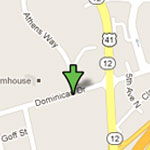If you’re looking for a Bible there are a number of factors to consider, such as: translation, physical characteristics, the textual basis, canon, and what I’ll call the extras. Right now I am going to cover some of those extras.
First to consider is whether you want many resources, in which case you’re looking for a study Bible, or if you want a reader’s version with just the basics. In either case the text will probably have a dual column layout. With some searching you may find a single column layout, which I personally find more comfortable to read for extended periods. Look for a version with wide margins so that you can make notes of your own thoughts or ideas you have found from other sources. Do not be afraid to write in your Bible and make highlights. It’s good to be reminded of older thoughts so you can build on them. Also, either version may have one or several ribbons to mark your place.
Many of the following resources will probably be missing in a reader’s Bible, or will be reduced: cross-references that lead to other verses that deal with the same subject or event and are usually noted with a superscript letter (sometimes they are set off on the same page). You may also superscript notation being used to note differences from other manuscripts. A study Bible will also have footnotes, hopefully copious footnotes. These footnotes could be scholarly explaining history, culture, and theology (like the Ignatius Catholic Study Bible) or devotional with quotes from the Catechism and saints (like the Navarre series) or even some combination. Some editions, like the Ignatius RSV-2CE, may be self-pronouncing, with the more difficult names divided into syllables and marks on which syllable is emphasized.
In any decent study Bible you will find an introduction to each book with explanatory material on the author, date of composition, an outline and its importance. You’ll also find a concordance, which is a listing of keywords and the verse(s) where they appear in Scriptures. Sort of a cross between an index and a glossary (which may also be present). The Dominican Hugh of St. Cher was the first to add a concordance to the Scriptures and the first to compile a collection of variant readings to the Vulgate. There may also be several charts and outlines with timelines of general history matching to events in Scriptures, a harmony of the Gospels, a listing of the miracles and/or parables of Jesus, weights and measures, monetary equivalents, etc. There should be maps of the ancient world, of the division of Israel by tribes, of Israel during the time of Christ, showing the routes of St. Paul’s missionary journeys and a gazetteer.
Other features a study Bible may have include a lectionary with the Scripture readings for Sundays and weekdays; a four week Psalter; a table of the movable feasts; and prayers, especially the Rosary and biblical meditations for each mystery. There may also be a copy of Dei Verbum (the Dogmatic Constitution on Divine Revelation) or the papal encyclicals Providentissimus Deus (On the Study of Holy Scriptures) by Leo XII, and Divino Afflante Spiritu (On the Most Opportune Way to Promote Biblical Studies) by Pius XII. Personally I also like to see the prayer Veni Creator Spiritus (Come Holy Spirit) and a listing of the indulgences for reading Scriptures, which are:
While a partial indulgence is granted to those who read from Sacred Scripture with the veneration which the divine word is due, a plenary indulgence is granted to those who read for at least one half an hour. (The Enchiridion of Indulgences #50)


 Our meetings are held at the Motherhouse located at:
Our meetings are held at the Motherhouse located at: Sunday, May 3rd, 2014
Sunday, May 3rd, 2014 Interested in joining the Lay Dominicans?
Interested in joining the Lay Dominicans?